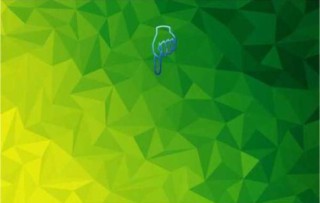Fabric Full-time Job
2022-09-28 07:41 Public Service Sāmarrā’ 22 views Reference: 2088Job Details
Textile fabric may be defined as the flexible assembly of fibers or yarns, either natural or manmade. It may be produced by a number of techniques, the most common of which are weaving, knitting, bonding, felting or tufting. Conventional fabrics (woven, knitted) are produced in such a way that the fibers are first converted into yarn and subsequently this yarn is converted into fabric. The fabrics can also be produced directly from the fibers. Such fabrics are termed as nonwovens. Each of these methods is capable of producing a large number of fabric structures, depending upon the raw material, machinery and the process involved. These fabrics are used for a wide range of applications from clothing to the technical purposes.
1 Weaving
The history of weaving dates back to ancient times, when human beings used woven fabrics to cover themselves. There are evidences that Egyptians made woven fabrics some 6000 years ago and silk became economically important in China 4000 years ago. It is the most commonly used technique of fabric manufacturing. The woven fabrics have a huge number of application areas like apparel, home textiles, filters, geo textiles, composites, medical, packing, seatbelts, industrial products, protection, etc.
Gauze is a type of thin medical fabric with a loose open weave used in wound care. Both gauze pads and gauze sponges are made of 100% cotton. They wick vertically to draw exudates out of wounds and are stronger than other types of dressings due to their longer fibers. Our gauze is offered in both sterile and non-sterile forms. For open wounds it is recommended to use sterile gauze only.
Gauze pads and gauze sponges are used in a number of different applications and are great for general cleaning, dressings, prepping, packing and debriding wounds. It can also be used as a temporary absorbent dressing over wounds. You would want to use gauze for cushioning or packing a wound, helping to heal the tissue from the inside out. The difference between these items are that gauze pads come with one per pack, while gauze sponges come with two or more per pack.
Absorbent
An absorbent material has small holes in it. When a liquid, such as water, comes into contact with a material with tiny holes in, such as paper or a sponge, the liquid is drawn into the tiny holes. It spreads out through the material using the holes. An absorbent material can even draw a liquid upwards. If you put a sponge or dishcloth on top of some water on a kitchen surface the water will go up into the absorbent material.
We use absorbent materials to soak up spills and for drying up. Kitchen towels (both cloth and paper) are absorbent. We use them for drying the washing up and for drying ourselves after a bath or a shower. Cotton wool is another absorbing material. It is used in bandages to absorb blood from a wound. A material called oasis is used to absorb water in a plant display, and pass it on to the plants.
Absorbent materials can be a problem. For example you do not want to be caught in a shower of rain when you are wearing absorbent materials. They will hold on to the water, making you feel wet and cold. Bricks absorb a little water. Those at the bottom of a wall absorb water from the ground. If this water moved up the wall and into the building it could cause damp walls. The water is stopped by placing a non-absorbent material between layers of bricks near the bottom of the wall. You may see this material as a black line in the cement low down in a wall. It is called a damp-proof course.
What Is Rayon? Here's What You Should Know
Rayon is one of the most versatile fabrics around, yet it remains somewhat of a mystery. That's partly because of its remarkable ability to shape-shift—not just literally, but also in terms of imitating other fabrics. Rayon has been known to take on the properties of silk, cotton, wool, and others, and can be used in nearly any type of clothing. This can make it challenging to pin down exactly what it is, how to launder it, and what type of weather it's best suited for. To help boost your familiarity with this ubiquitous fabric, keep reading to see everything you need to know about rayon.
What Is Rayon?
Air jet loom is one kinds of shuttle less loom. Normally, air jet loom uses a jet of air for propelling the filling yarn through the weaving shed. It requires uniform filling yarn. They are suitable use with medium weight yarns then very light and very heavy yarn. Air jet loom is one of the two types of fluid jet looms where another one is water jet loom.
Features of Air Jet Loom:Some key features of air jet loom have mentioned in the below:
In case of air jet loom, higher weft insertion performance occurred.
Less power consumption in air jet loom.
It needs multi-color weft insertion up to eight.
Air jet loom provides higher production than others.
Light and medium fabric has produced here.
Here fabric width is 190 cm.


